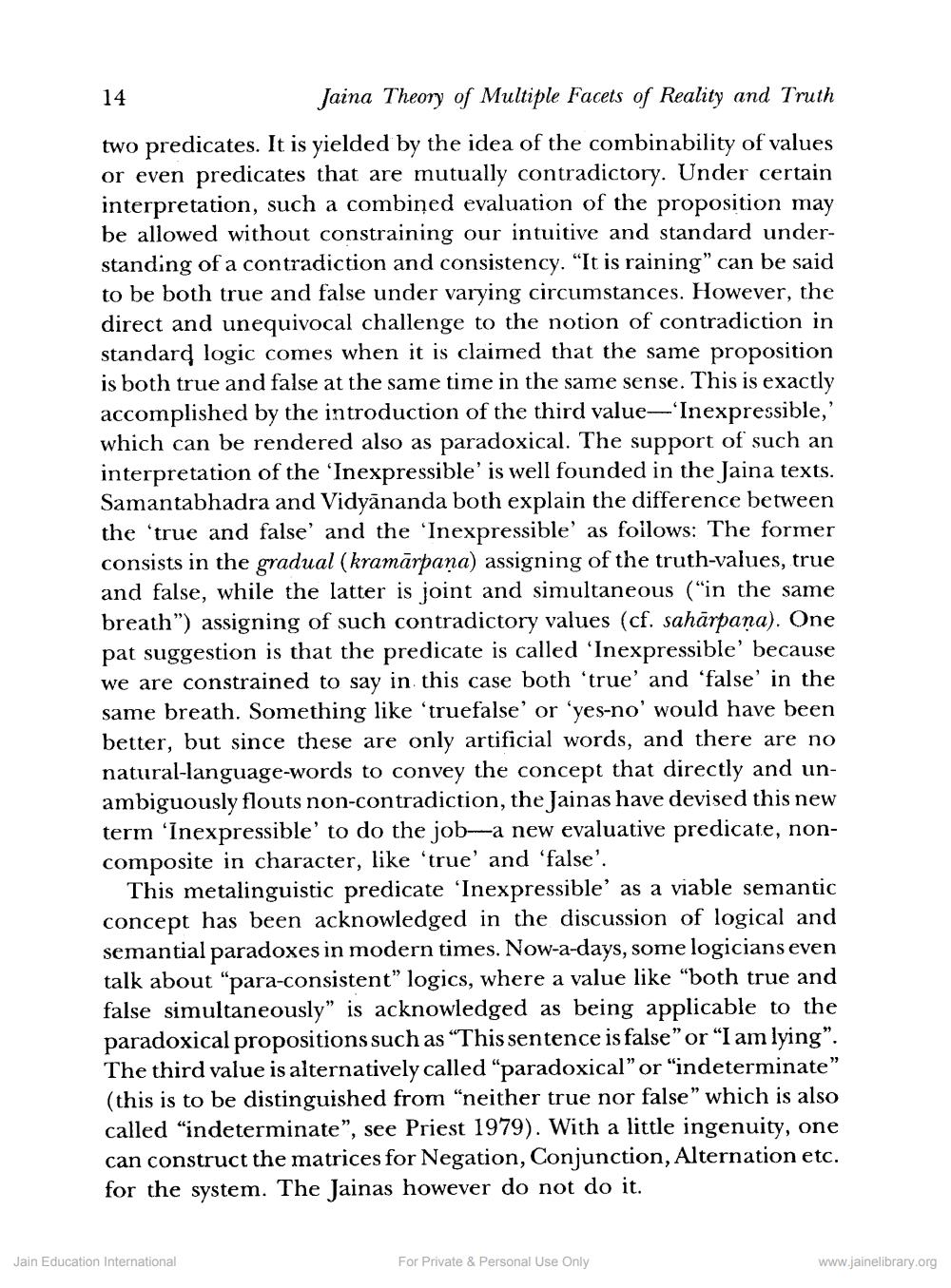________________
Jaina Theory of Multiple Facets of Reality and Truth
two predicates. It is yielded by the idea of the combinability of values or even predicates that are mutually contradictory. Under certain interpretation, such a combined evaluation of the proposition may be allowed without constraining our intuitive and standard understanding of a contradiction and consistency. "It is raining" can be said to be both true and false under varying circumstances. However, the direct and unequivocal challenge to the notion of contradiction in standard logic comes when it is claimed that the same proposition is both true and false at the same time in the same sense. This is exactly accomplished by the introduction of the third value-'Inexpressible,' which can be rendered also as paradoxical. The support of such an interpretation of the 'Inexpressible' is well founded in the Jaina texts. Samantabhadra and Vidyananda both explain the difference between the 'true and false' and the 'Inexpressible' as follows: The former consists in the gradual (kramarpana) assigning of the truth-values, true and false, while the latter is joint and simultaneous ("in the same breath") assigning of such contradictory values (cf. sahārpaṇa). One pat suggestion is that the predicate is called 'Inexpressible' because we are constrained to say in this case both 'true' and 'false' in the same breath. Something like 'truefalse' or 'yes-no' would have been better, but since these are only artificial words, and there are no natural-language-words to convey the concept that directly and unambiguously flouts non-contradiction, the Jainas have devised this new term 'Inexpressible' to do the job-a new evaluative predicate, noncomposite in character, like 'true' and 'false'.
This metalinguistic predicate 'Inexpressible' as a viable semantic concept has been acknowledged in the discussion of logical and semantial paradoxes in modern times. Now-a-days, some logicians even talk about "para-consistent" logics, where a value like "both true and false simultaneously" is acknowledged as being applicable to the paradoxical propositions such as "This sentence is false" or "I am lying". The third value is alternatively called "paradoxical" or "indeterminate" (this is to be distinguished from "neither true nor false" which is also called "indeterminate", see Priest 1979). With a little ingenuity, one can construct the matrices for Negation, Conjunction, Alternation etc. for the system. The Jainas however do not do it.
14
Jain Education International
For Private & Personal Use Only
www.jainelibrary.org




